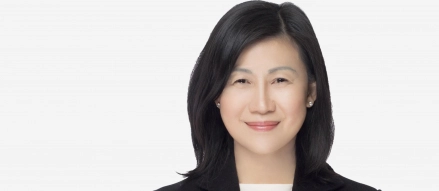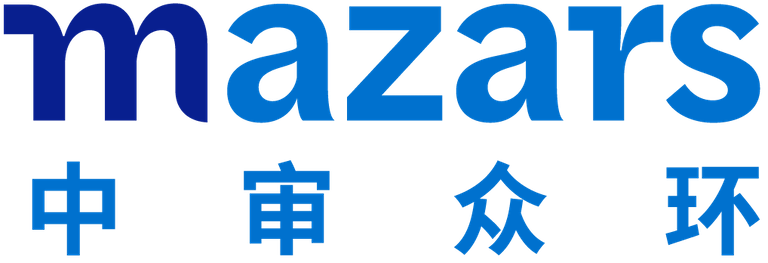
Insights from North Asia’s beauty industry: integrating technological and sustainable transformation
What are the main consumer trends and challenges for business leaders, in China or North Asia more generally?
To set the scene, there are three influential beauty markets in L’Oréal’s North Asia Zone, comprising China, Japan, and Korea, which together account for a third of the global beauty market. These individual markets are characterised by intense consumer engagement, innovation, and sophistication. They influence each other, as well as the rest of the world and their trends are shaping the future of the beauty industry.
First up is the consumer base’s rising sophistication and level of knowledge. Consumers across North Asia consider functionality as a key purchase motivator, especially in skincare, where having a sophisticated routine with multiple products to address complex skincare needs is the norm. The expertise of consumers has reached new heights when it comes to functionality in terms of formulation, ingredients, and benefits. Younger consumers are driving this trend since digital platforms enable them to become more knowledgeable and demanding in their personal beauty care needs.
This leads to the second trend, which is the ‘skinification’ of the personal care industry – a concept that encapsulates the integration of skincare-inspired ingredients and benefits into other product categories, like hair and makeup. Consumers increasingly look at the dimension of self-care and wellness within ingredients and their routines. The beauty industry is responding to this demand by creating multifunctional products, for instance, by integrating active ingredients like hyaluronic acid – popularised initially in skincare products – into hair care products.
Lastly, digitalisation occupies an increasingly significant role in transforming consumer habits. Platforms such as TikTok and Instagram have reshaped how consumers discover cosmetic and beauty products. Especially, through what could be referred to as the recent ‘content revolution’, meaning that rather than the consumer searching for the product, the reverse is true whereby the product appears as a recommendation to the consumer. This trend is starting to manifest itself not only in North Asia but around the rest of the world. Another key trend in China is live streaming, a form of e-commerce providing entertainment and community interaction alongside product sales.
One of the key themes of our study is how sustainability is reshaping the consumer industry’s approach to market. How do perceptions towards ESG differ in the North Asian consumer sector from the rest of the world?
Based on our research, the positive impact of sustainability on society is increasingly recognised, especially among young Gen Z consumers. However, there is still a dialectical tension between their intentions and actions – we say “Say-do Gap”. To overcome this, we are directly engaging with consumers. For instance, by linking recycling and loyalty programmes – consumers in China can return empty products to Lancôme stores and benefit from a voucher for discounts on future purchases. We also develop refillable products across many of our brands, enabling our consumers to work with us to reuse and recycle our products.
Increasing consumers’ awareness is key, and thus we have collaborated alongside 50 other major players in the beauty industry globally in forming the EcoBeautyScore Consortium to develop an industry-wide environmental impact assessment and scoring system. In parallel, we pioneered a product impact labelling system to inform consumers on the environmental and social impact of our products, with products assigned a rating from A to F. This information guarantees transparency, and helps consumers make conscious choices whilst simultaneously encouraging continuous improvement in product sustainability.
Marketing and consumer education towards a sustainable lifestyle is also one of the three objectives outlined in our three-year partnership with Alibaba, signed in April 2023. To promote a circular economy in China’s beauty industry, we are furthermore working on low-carbon commodities and logistics.
As a company, we keep transforming ourselves, as demonstrated by the North Asia Zone including China, Japan and Korea being the first zone of L’Oréal Group to reach carbon neutrality across all operated sites in 2022. Now we are working with our suppliers to enable them to move forward, but to see large scale impact we need to go beyond ourselves and our upstream value chain – we have to address sustainability downstream too.
You mentioned earlier that digitalisation is a key trend. What are the main opportunities and challenges for the beauty industry in this area?
At L’Oréal, we have embraced digital transformation for over a decade, viewing beauty and digital as a perfect match. China was the ideal market to implement this transformation: firstly, the country already has an advanced digital ecosystem and secondly, we approached digitalisation in a highly consumer-centric way. By placing the consumer at the heart and using digital capabilities to collect and transform data into consumer insights and business actions, we could anticipate trends, innovate, adapt our communication, and build a strong brand – and finally grow our market share. All thanks to this capability of understanding consumers.
The other main opportunity is of course e-commerce. We have recently partnered with platforms such as Tmall and JD, facilitating a more open business model that caters to features such as live streaming. Indeed, at L’Oréal China, we do hundreds of hours of livestreaming a week. The speed and scale of business in China means we need to be very responsive and agile to adapt fast and succeed in this environment.
Yet, challenges in this field persist, including adapting the marketing mix in many ways, or the need for upscaling talent to keep up with technological advances that constantly change the industry. L’Oréal nevertheless sees technological disruptions as opportunities and we are exploring the next stage, what we call ‘natural beauty tech’ – leveraging technology to allow beauty to become even more precise and personalised.
Looking ahead, I believe the future of the industry boils down to online, offline, and open innovation – a single company will never make it alone, so we co-work with the ecosystem of start-ups to explore new solutions. Encouraging open innovation, L’Oréal North Asia just launched “Big Bang Beauty Tech Innovation Program” at Viva Technology in June 2023. It is the first regional program focused on driving opening innovation, inspiration and co-creation of innovative beauty solutions in North Asia. The program targets innovative startups in North Asia including China, Japan and Korea and discovers promising companies with beauty tech and innovative sciences that can be scaled regionally and globally.
Before we close, what advice would you give consumer companies, outside of beauty, which aim to approach the Chinese market?
There are two pieces of advice that I consider critical to ensure success.
Firstly, understanding Chinese consumers is essential. To thrive in this diverse market, companies must offer relevant products and services that cater to various consumer preferences.
Secondly, we must bear in mind that the recipes of the past are not the recipes of the future, meaning that there is always something new and exciting to embrace. Companies must view the constantly evolving market as an opportunity, embrace change and disrupt traditional practices to reach the hearts and minds of consumers.
About Fabrice Megarbane, President of L’Oréal North Asia and CEO of L’Oréal China, Member of L’Oréal Group Executive Management Committee
Fabrice joined the Group in 2000 in the Professional Products Division in France and has since achieved a very successful track record. He was appointed General Manager of L’Oréal Lebanon in 2008, becoming the youngest Country General Manager at age 34.
In a difficult market and in a complex environment, he demonstrated great qualities of vision, leadership, courage and commitment. Building on this success, Fabrice was promoted to CDP’s Zone Director for ZAMO in 2011,
In this region which is important for the future of the Group, Fabrice once again demonstrated his strategic and operational qualities, which are reflected in the acceleration of our growth in these markets and in the development of new subsidiaries with a promising future.
In 2015, Fabrice was appointed General Manager of L’Oréal Germany, one of the Group’s largest subsidiaries. His new responsibility was once again crowned with great success. In this very competitive market, L’Oréal gained market share and strengthened its leadership.
In 2019, Fabrice became the president and CEO of L’Oréal China and a member of the Executive Committee of the L’Oréal Group, which he leads with inspiration, and write, with the Chinese teams, a new chapter of the tremendous development of this business which plays a major role in the Group’s future.
In January 2021, following a new organisation of geographic Zones, he becomes President for North Asia Zone (which regroups Mainland China, Hong Kong SAR, Taiwan Region, Japan, and South Korea), in addition to his current duties as CEO of L’Oréal China.
